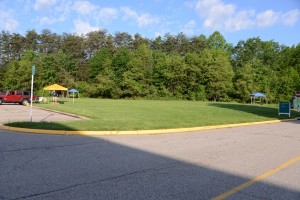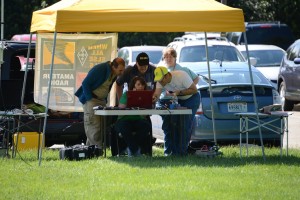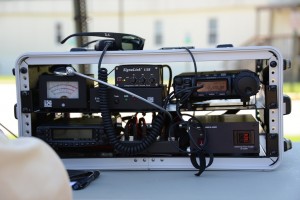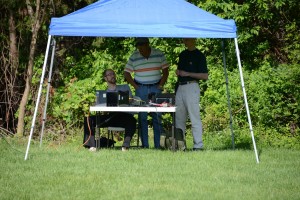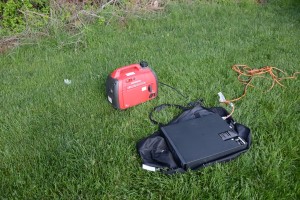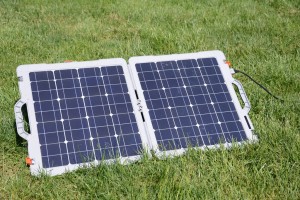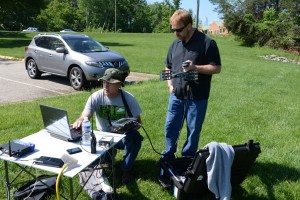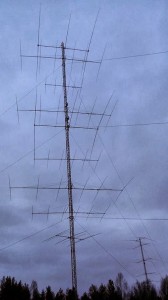I have sent the following letter to our State Senator in response to the limitations on Amateur Radio operations in SB74.
Sen McPike/info Dels Carter/Roem:
In reviewing SB74 as written (or at least as available to those of us outside the halls of government), https://legiscan.com/VA/text/SB74/2018, it is still not acceptable to restrict Amateur Radio operations as outlined in section B6, while not limiting Citizen’s Band (CB) operations, as listed in section B5.
I do not understand the exact rationale behind the limitations for Amateur Radio or the lack of constraints for CB operations. I would suggest section B5 read:
The use of Citizens Band, or other federally licensed radio services. (Citizens Band radio operations do not require a federal license, while others do, either by examination or payment of fee.)
Barring that, allow me to illustrate the issues associated with section B6 in its current form:
Vehicles used or operated by federally licensed amateur radio operators (i) while participating in emergency communications or drills on behalf of federal, state, or local authorities or (ii) to provide communications services to localities in the Commonwealth for public service events, including marathons, footraces, or activities authorized by the Department of Transportation or the locality in which the event is being conducted;
There are several challenges with this section.
1) At the gross level, how is a law enforcement officer supposed to differentiate between an Amateur Radio operator and a CB operator? The obvious answer is they cannot, at a glance tell the difference, making the law either unenforceable or placing a considerable burden on the general public to educate the officer at the time of the stop. As a member of the Amateur Radio community and the Jeep community, I have both an Amateur radio, and a CB radio mounted in my vehicle, and I am not alone. It is not just truckers who use CB. (In fact, most truck fleets are using satellite [VSAT] for tracking and communications along with cellular technology.)
But, for a moment pretend that a distinction can be made:
2) while participating in emergency communications or drills on behalf of federal, state, or local authorities.
The key problem here is in deciding what form of authorization is going to be required to prove we are participating. A disaster declaration? A calendar entry? Many of our drills and exercises are done without the direct knowledge of our supported agencies. What sort of proof would be needed to show we were participating in a drill on behalf of our agency? Would it fall the to the Amateur Radio community to provide proof that we were in fact involved in an exercise, and would it then be up to the judge to accept or reject that evidence? Because it is not well defined, that is an onerous burden to place on hobbyists, especially those of us like myself in leadership positions.
3) to provide communications services to localities in the Commonwealth for public service events, including marathons, footraces, or activities authorized by the Department of Transportation or the locality in which the event is being conducted;
Again, what constitutes such events? When is it deemed acceptable to be supporting them? I will use the Marine Corps Program Office events in Prince William County as an example. In the spring the MCM puts on the Crossroads 17.75. The race functionally runs from 0700 – 1100 on a Saturday morning. However, because of road closures and the need to circumnavigate the Prince William forest to get into position, we often are required to start operations as much as two hours before the event. Frequently we will continue to support the event several hours after the runners have gone home as we aid in tear down and clean up. This is only one example; there are many more. In my years as Emergency Coordinator, I can cite numerous cases where we are out preparing to support an activity weeks in advance of that activity, so we are ready to assist. This includes site surveys, propagation studies, antenna position tests, etc. Would this be acceptable under this clause? What proof would be needed? What about after the fact testing? Who makes the decisions?
4) Process and Reporting. The above two sections, if enacted, would entail a new level of process and paperwork within the Amateur communities that does not exist today and would have to be modified with each judgment for or against our operators. Amateur Radio operators are hobbyists at the core of their being. They are not career first-responders (although some may be). They give of their time to support the community, but it is not all they do. To have to ensure that the right pieces of paper are filed or verify that they can use their radios while in motion would place an unnecessary burden on them.
5) General communications. Most Amateur Radio operators do not have radios in their vehicles to be ready for a disaster. Only a small portion of the Amateur Radio community is involved in disaster preparation and response. Most operators have a radio in their vehicle merely to talk to other operators. While this may seem odd in this day of ubiquitous cell phones, there are numerous advantages, least of which is a roundtable discussion format that you cannot do with a cell phone (or at least without some type of conference feature). I have used my radio during times of cellular overload (which happens more than you might think) to get a report of traffic ahead of me (more efficient and safer than opening up an application and punching around to find your location). We discuss upcoming events, propagation, and other general topics — much like those who use CB — all within the bounds of our license restrictions for use of the public airwaves.
In looking at this law, I have outlined the case against a specific set of restrictions for the use of Amateur Radio and highlighted many of the reasons why these restrictions, if implemented, would be detrimental to the use of Amateur Radio while also placing a burden on law enforcement to determine what radio was in use that instigated the traffic stop. I would encourage the adoption of the language I suggest for section B5 and drop the section B6 for the benefit of all.
